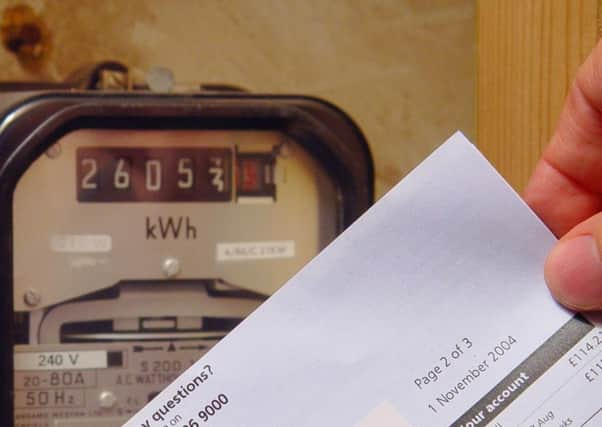Ending fuel poverty attainable with new approach


SUMMER isn’t usually the time that heating bills are foremost in our minds but with the gloomy, washout summer of 2015, we can be sure that households across Scotland are opting to pop their heating on in the evenings. Some people, however, will be thinking long and hard before they flick that switch. That’s because 940,000 homes across Scotland are currently living in fuel poverty – almost two in every five households.
For many people, fuel poverty can mean choosing between eating and heating. It can mean living in a home that is damp, draughty and hard to heat. It can mean greater chances of ill-health such as respiratory conditions and other ailments, which in turn increases pressure on our already stressed NHS. The Existing Homes Alliance, which I chair (comprising anti-poverty, consumer, environmental, housing and building organisations), has been calling for some time for this problem to be tackled through an entirely new, ambitious approach. By 2025, we believe that all homes should be more energy efficient so that no -one in Scotland has to live in a hard to heat property.
Advertisement
Hide AdAdvertisement
Hide AdThat’s why it was promising to see the Scottish Government recently announce their intention to adopt a new strategy that could lift people out of fuel poverty, cut climate emissions and create jobs. In June, the government committed to making energy efficiency a national infrastructure priority, by developing a new programme to provide support to both homes and non-domestic premises to reach a good energy efficiency standard over a 15 to 20 year period. This may sound quite technical, but it could be something that benefits us all.
So that it really represents a step forward from the status quo, it’s critical to get the detail right as it’s designed over the next couple of years. By designating energy efficiency as a national infrastructure priority, the Existing Homes Alliance believes that the Scottish Government must put together a comprehensive plan to upgrade close to 130,000 homes a year, so that all homes achieve a C energy performance standard by 2025. The programme would involve grants for the fuel poor, incentives and low-interest loans for the able to pay, and private investment from homeowners, landlords, and other sources.
This approach will mean investing significantly more from the Scottish capital budget over a long timescale and private funding and innovative funding models will also have an important role to play, alongside the funding from the UK wide Energy Companies Obligation scheme.
We estimate that the scale of investment required would be upwards of £10 billion over the next decade. Of this, £4.5bn would be made up of public investment – approximately one and a half times the cost of the A9 upgrade – with the remainder leveraged from private investment. Investing in energy efficiency represents better value for money compared to other infrastructure projects and delivers a threefold GDP return for every public pound invested according to research for Consumer Futures. And of course the wider rewards more than outweigh the costs.
Improving the energy efficiency of our homes can help reduce energy bills by up to £400 a year for households, pull many people out of fuel poverty, create up to 9,000 jobs a year in the insulation sector across Scotland, cut excess winter deaths and other health problems associated with cold homes and enhance energy security. Importantly, it can also help Scotland to cut its climate change emissions – over half of which are associated with heating our buildings and water.
With new powers coming to Scotland to design a new energy efficiency programme tailored for Scotland, there is a timely opportunity for this new infrastructure approach to gain traction.
There’s much to be worked out before this commitment becomes a reality and Scottish homes experience the tangible benefits.
If the Scottish Government works to insulate our leaky building stock with the same ambition and clarity of purpose it gives to other major infrastructure projects – whether that’s spanning the Forth with a replacement crossing or building the state-of-the-art South Glasgow Hospital – it could make a real difference to quality of life right across the country.
• Alan Ferguson is Chair of Existing Homes Alliance of which WWF Scotland is a member. www.wwfscotland.org.uk